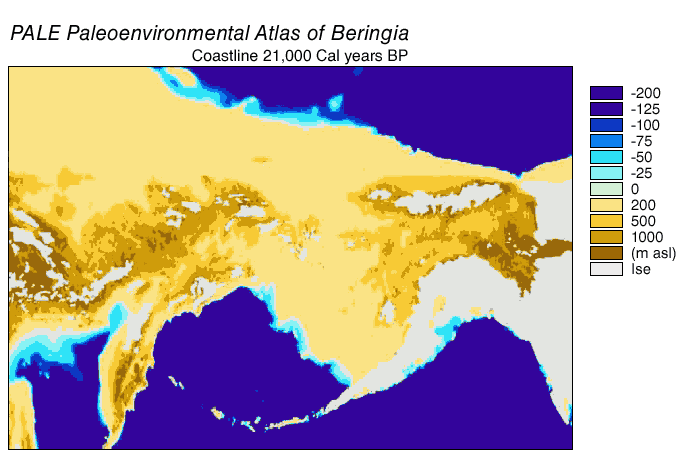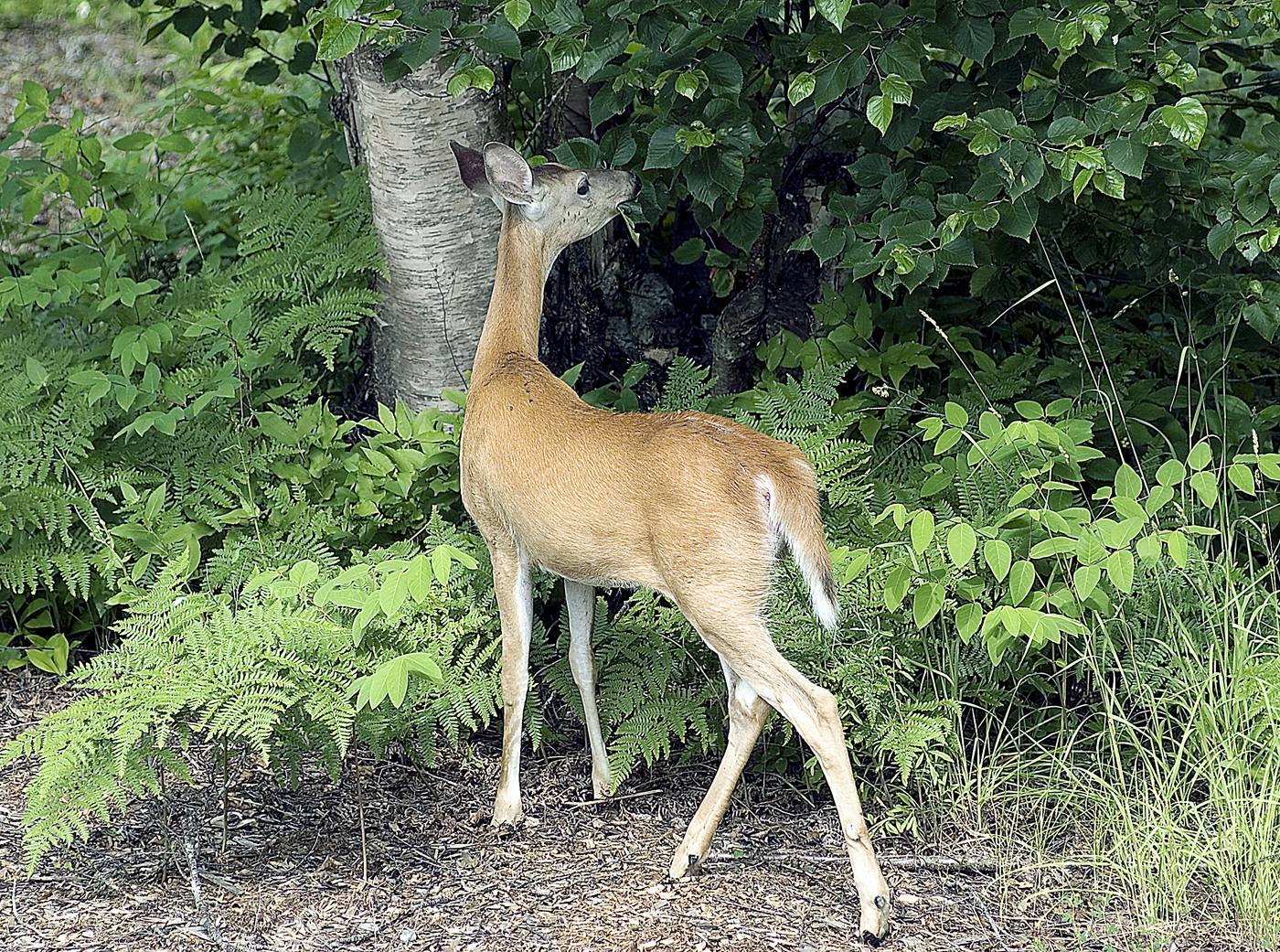|
Giant Bison
''Bison latifrons'', also known as the giant bison or long-horned bison, is an extinct species of bison that lived in North America during the Late Pleistocene epoch ranging from southern Canada to Mexico. It is noted for its large body size and its distinctive long horns. Description Because only skulls and horns of this species have been found well preserved, the size of ''B. latifrons'' is currently not clearly known. Based on leg bones, the mass of ''B. latifrons'' has been estimated to be 25-50 percent larger than that of modern ''B. bison'', making it undoubtedly one of the largest-ever ruminants. The known dimensions of the species are on average larger than any extinct and extant bovids, including both the American bison and the European bison, making it the largest known bovid. Overall, it was probably around in length and stood about or up to tall at the withers. With an estimated weight of to , ''B. latifrons'' was one of the largest ruminants ever, rivaled in mass ... [...More Info...] [...Related Items...] OR: [Wikipedia] [Google] [Baidu] |
Richard Harlan
Richard Harlan (September 19, 1796 – September 30, 1843) was an American paleontologist, anatomist, and physician. He was the first American to devote significant time and attention to vertebrate paleontology and was one of the most important contributors to the field in the early nineteenth century. His work was noted for its focus on objective descriptions, taxonomy and nomenclature. He was the first American to routinely apply binomial Linnaean names to vertebrate and invertebrate fossils. Prior to the time of Harlan, it was common practice to publish only a genus name for a fossil animal that was new to science. Biography Harlan was born in Philadelphia on September 19, 1796, to Joshua Harlan, a wealthy Quaker merchant, and his wife Sarah Hinchman Harlan, one of their ten children. He was three years older than his brother Josiah Harlan, who would become the first American to visit Afghanistan. Harlan graduated in medicine from the University of Pennsylvania in 1818 afte ... [...More Info...] [...Related Items...] OR: [Wikipedia] [Google] [Baidu] |
Beringia
Beringia is defined today as the land and maritime area bounded on the west by the Lena River in Russia; on the east by the Mackenzie River in Canada; on the north by 70th parallel north, 72° north latitude in the Chukchi Sea; and on the south by the tip of the Kamchatka Peninsula. It includes the Chukchi Sea, the Bering Sea, the Bering Strait, the Chukchi Peninsula, Chukchi and Kamchatka peninsulas in Russia as well as Alaska in the United States and Yukon in Canada. The area includes land lying on the North American Plate and Siberian land east of the Chersky Range. At various times, it formed a land bridge referred to as the Bering land bridge, that was up to wide at its greatest extent and which covered an area as large as British Columbia and Alberta together, totaling about , allowing biological dispersal to occur between Asia and North America. Today, the only land that is visible from the central part of the Bering land bridge are the Diomede Islands, the Pribilof Isla ... [...More Info...] [...Related Items...] OR: [Wikipedia] [Google] [Baidu] |
Pleistocene Mammals Of North America
The Pleistocene ( ; referred to colloquially as the ''Ice Age'') is the geological epoch that lasted from to 11,700 years ago, spanning the Earth's most recent period of repeated glaciations. Before a change was finally confirmed in 2009 by the International Union of Geological Sciences, the cutoff of the Pleistocene and the preceding Pliocene was regarded as being 1.806 million years Before Present (BP). Publications from earlier years may use either definition of the period. The end of the Pleistocene corresponds with the end of the last glacial period and also with the end of the Paleolithic age used in archaeology. The name is a combination of Ancient Greek () 'most' and (; Latinized as ) 'new'. The aridification and cooling trends of the preceding Neogene were continued in the Pleistocene. The climate was strongly variable depending on the glacial cycle, oscillating between cold glacial periods and warmer interglacials, with the sea levels being up to lower than ... [...More Info...] [...Related Items...] OR: [Wikipedia] [Google] [Baidu] |
Prehistoric Bovids
Prehistory, also called pre-literary history, is the period of human history between the first known use of stone tools by hominins million years ago and the beginning of recorded history with the invention of writing systems. The use of symbols, marks, and images appears very early among humans, but the earliest known writing systems appeared years ago. It took thousands of years for writing systems to be widely adopted, with writing having spread to almost all cultures by the 19th century. The end of prehistory therefore came at different times in different places, and the term is less often used in discussing societies where prehistory ended relatively recently. It is based on an old conception of history that without written records there could be no history. The most common conception today is that history is based on evidence, however the concept of prehistory hasn't been completely discarded. In the early Bronze Age, Sumer in Mesopotamia, the Indus Valley Civilis ... [...More Info...] [...Related Items...] OR: [Wikipedia] [Google] [Baidu] |
Bison
A bison (: bison) is a large bovine in the genus ''Bison'' (from Greek, meaning 'wild ox') within the tribe Bovini. Two extant taxon, extant and numerous extinction, extinct species are recognised. Of the two surviving species, the American bison, ''B. bison'', found only in North America, is the more numerous. Although colloquially referred to as a buffalo in the United States and Canada, it is only distantly related to the true buffalo. The North American species is composed of two subspecies, the Plains bison, ''B. b. bison'', and the generally more northern wood bison, ''B. b. athabascae''. A third subspecies, the eastern bison (''B. b. pennsylvanicus'') is no longer considered a valid taxon, being a junior synonym of ''B. b. bison''. Historical references to "woods bison" or "wood bison" from the Eastern United States refer to this synonym animal (and to their eastern woodland habitat), not to ''B. b. athabascae'', wh ... [...More Info...] [...Related Items...] OR: [Wikipedia] [Google] [Baidu] |
Voyageur Press
The Quarto Group is a global illustrated book publishing group founded in 1976. It is domiciled in the United States and listed on the London Stock Exchange. Quarto creates and sells illustrated books for adults and children, across 50 countries and in 40 languages, through a variety of traditional and non-traditional channels. Quarto employs c.330 people in eight offices in London, Brighton, New York City, Boston, Seattle, Southern California and Hong Kong. In July 2020, its publication ''This Book Is Anti-Racist'' by Tiffany Jewell reached the Number 1 position on The New York Times bestseller list. The group was established by co-founders Laurence Orbach and Robert Morley and was listed on the London Stock Exchange in 1986. Laurence Orbach was chairman and CEO until November 2012, when he was replaced as chairman by Tim Chadwick and Marcus Leaver as CEO. Chuk Kin Lau, the principal shareholder, became Group CEO in July 2018. In February 2020, the Italian publisher, Giunti ... [...More Info...] [...Related Items...] OR: [Wikipedia] [Google] [Baidu] |
Before Present
Before Present (BP) or "years before present (YBP)" is a time scale used mainly in archaeology, geology, and other scientific disciplines to specify when events occurred relative to the origin of practical radiocarbon dating in the 1950s. Because the "present" time changes, standard practice is to use 1January 1950 as the commencement date (epoch) of the age scale, with 1950 being labelled as the "standard year". The abbreviation "BP" has been interpreted retrospectively as "Before Physics", which refers to the time before nuclear weapons testing artificially altered the proportion of the carbon isotopes in the atmosphere, which scientists must account for when using radiocarbon dating for dates of origin that may fall after this year. In a convention that is not always observed, many sources restrict the use of BP dates to those produced with radiocarbon dating; the alternative notation "RCYBP" stands for the explicit "radio carbon years before present". Usage The BP scale is s ... [...More Info...] [...Related Items...] OR: [Wikipedia] [Google] [Baidu] |
Browsing (herbivory)
Browsing is a type of herbivory in which a herbivore (or, more narrowly defined, a folivore) feeds on leaves, soft Shoot (botany), shoots, or fruits of high-growing, generally woody plants such as shrubs. This is contrasted with Grazing (behaviour), grazing, usually associated with animals feeding on grass or other lower vegetations. Alternatively, grazers are animals eating mainly grass, and browsers are animals eating mainly non-grasses, which include both woody and herbaceous Dicotyledon, dicots. In either case, an example of this dichotomy are goats (which are primarily browsers) and Domestic sheep, sheep (which are primarily grazers). Browse The plant material eaten is known as ''browse'' and is in nature taken directly from the plant, though owners of livestock such as goats and deer may cut twigs or branches for feeding to their stock. In temperate regions, owners take browse before leaf fall, then dry and store it as a winter feed supplement. In time of drought, herdsme ... [...More Info...] [...Related Items...] OR: [Wikipedia] [Google] [Baidu] |
Clark Quarry
Clark Quarry is a paleontological dig site in southern Georgia. The site first discovered fossils by the building of the Brunswick Canal in 1838-1839. Geology Clark Quarry is a cut and fill fluvial deposit overlying a marine sand, near Brunswick, Georgia, United States in Glynn County. The marine unit is characterized by a well-sorted, subrounded, low sphericity, fine- grained quartz arenite representing sediments of the Princess Anne Terrace. This site is in the pleistocene era on the geologic timescale. Fossils *Woodchuck–'' Marmota monax'' *Bog lemming–'' Synaptomys cooperi'' *Capybara–''Hydrochoeris holmesi'' *Florida or round-tailed muskrat–'' Neofiber alleni'' *Rice rat–''Oryzomys palustris'' *Cotton rat–'' Sigmodon hispidus'' *Harvest mouse–''Reithrodontomys'' *Columbian Mammoth-''Mammuthus columbi'' *Pleistocene Bison-''Bison latifrons'' *American Alligator-'' Alligator mississippiensis'' *''Nerodia sp'' *Garter Snake-'' Thamnophis sp'' *Giant Ground Sl ... [...More Info...] [...Related Items...] OR: [Wikipedia] [Google] [Baidu] |
Grazing (behaviour)
Grazing is a method of eating, feeding in which a herbivore feeds on low-growing plants such as grasses or other multicellular organisms, such as algae. Many species of animals can be said to be grazers, from large animals such as Hippopotamus, hippopotamuses to small aquatic Snail, snails. Grazing Ethology, behaviour is a type of List of feeding behaviours, feeding strategy within the ecology of a species. Specific grazing strategies include Graminivore, graminivory (eating grasses); coprophagy (producing part-digested pellets which are reingested); pseudoruminant (having a multi-chambered stomach but not chewing the cud); and grazing on plants other than grass, such as on marine algae. Grazing's ecological effects can include redistributing nutrients, keeping grasslands open or favouring a particular species over another. Ecology Many small selective herbivores follow larger grazers which skim off the highest, tough growth of grasses, exposing tender shoots. For terrestrial a ... [...More Info...] [...Related Items...] OR: [Wikipedia] [Google] [Baidu] |
Quaternary Science Reviews
''Quaternary Science Reviews'' is a peer-reviewed scientific journal covering quaternary science. It was established in 1982 by Pergamon Press and is currently published by Elsevier. The editor-in-chief is C.V. Murray Wallace (University of Wollongong). According to the ''Journal Citation Reports'', the journal has a 2013 impact factor The impact factor (IF) or journal impact factor (JIF) of an academic journal is a type of journal ranking. Journals with higher impact factor values are considered more prestigious or important within their field. The Impact Factor of a journa ... of 4.571. References External links * Elsevier academic journals Biweekly journals English-language journals Academic journals established in 1982 Quaternary science journals Archaeology journals {{archaeology-journal-stub ... [...More Info...] [...Related Items...] OR: [Wikipedia] [Google] [Baidu] |






